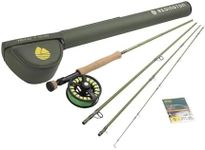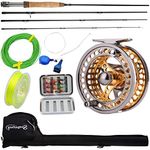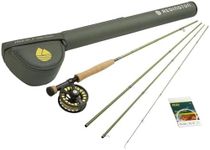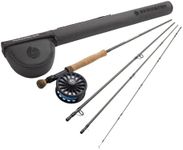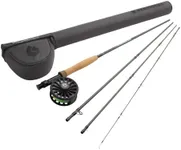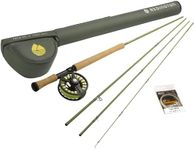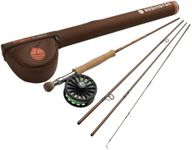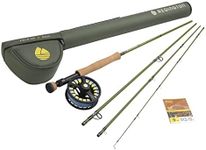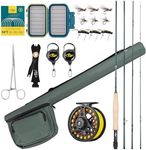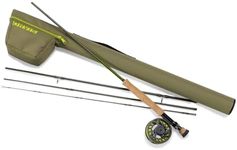Buying Guide for the Best Starter Fly Fishing Combo
Choosing the right starter fly fishing combo can make a significant difference in your fishing experience. A fly fishing combo typically includes a rod, reel, line, and sometimes a carrying case. When selecting a combo, it's important to consider the type of fish you plan to catch, the fishing environment, and your level of experience. Understanding the key specifications will help you make an informed decision and ensure you have the right equipment to enjoy your time on the water.Rod LengthRod length is the measurement of the fly rod from the butt to the tip. It is important because it affects casting distance and accuracy. Shorter rods (6-8 feet) are ideal for small streams and tight spaces, offering better control and precision. Medium-length rods (8-9 feet) are versatile and suitable for a variety of fishing environments, making them a great choice for beginners. Longer rods (9-10 feet) provide greater casting distance and are useful in larger rivers or lakes. Choose a rod length based on the typical fishing locations you plan to visit.
Rod WeightRod weight refers to the weight of the line that the rod is designed to cast, not the physical weight of the rod itself. It is crucial because it determines the type of fish you can catch and the conditions you can fish in. Lightweight rods (1-3 weight) are suitable for small fish like trout in calm waters. Medium-weight rods (4-6 weight) are versatile and can handle a variety of fish sizes and water conditions, making them ideal for beginners. Heavyweight rods (7-9 weight) are designed for larger fish and tougher conditions, such as saltwater fishing. Consider the type of fish and fishing environment when selecting the rod weight.
Reel TypeThe reel type is important because it affects the balance and performance of your fly fishing combo. There are two main types of reels: single-action and automatic. Single-action reels are the most common and simplest to use, making them ideal for beginners. They require manual winding of the line, which provides better control and feel. Automatic reels, on the other hand, use a spring mechanism to retrieve the line quickly, but they are less common and can be more complex to use. For a starter combo, a single-action reel is usually the best choice due to its simplicity and reliability.
Line TypeThe line type is crucial because it affects casting performance and the ability to present the fly to the fish. There are three main types of fly lines: floating, sinking, and sink-tip. Floating lines are the most versatile and easiest to use, making them ideal for beginners. They stay on the water's surface and are suitable for most fishing situations. Sinking lines are designed to go underwater and are used for deep-water fishing. Sink-tip lines have a sinking tip and a floating body, providing a balance between floating and sinking lines. For a starter combo, a floating line is usually the best choice due to its versatility and ease of use.
Combo PackageA combo package typically includes a rod, reel, line, and sometimes additional accessories like a carrying case or flies. It is important because it ensures that all components are compatible and balanced, providing a better fishing experience. When choosing a combo package, look for one that includes high-quality components and is designed for beginners. This will ensure that you have everything you need to get started and that the equipment is easy to use. Consider the reputation of the brand and read reviews to ensure you are getting a reliable and well-balanced combo.
